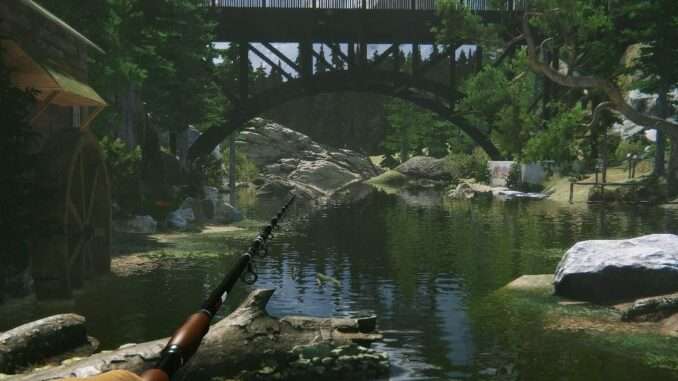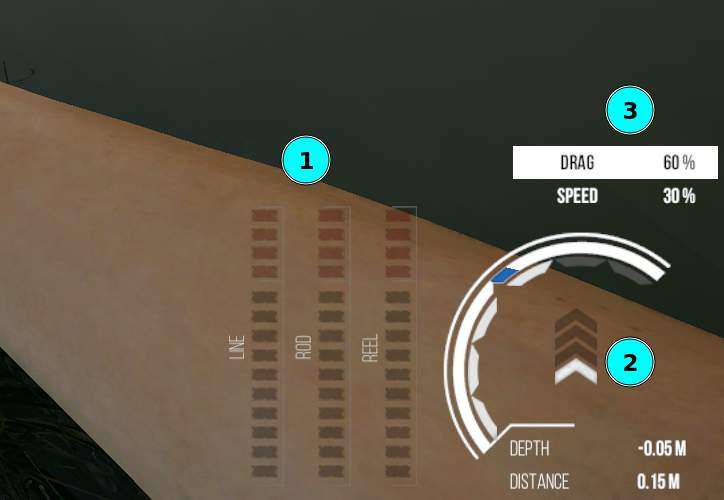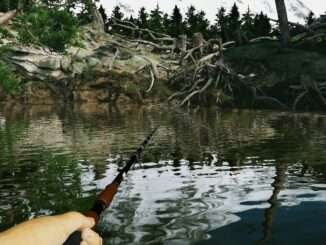
For people who are new to Ultimate Fishing Simulator games, or fishing sim games in general, this guide goes over the basics and covers things that might not be explicitly explained in the in-game tutorial.
Contents
Beginners Guide
All credit goes to WelshPixie!
Fishing Setup
Your fishing setup has three main points of failure that protect your gear, from the cheapest to most expensive:
- Line
- Reel
- Rod
The line is cheaper to replace than the reel, which is cheaper to replace than the rod – so that’s the order you want things to break in.

When building your setup, keep that in mind, and always have the rod as your strongest item (the highest weight rating), then the reel, then the line. That way, when your line is the weakest, the line will snap first – rather than your expensive reel or rod!
For example, a good setup would be a rod that can take 4.5kg, a reel that can take 4.2kg, and a line that can take 4kg.
Leaders will also protect your line and snap first, but there aren’t many leaders in-game currently to choose from so it’s a bit harder to customise with them; as such, you can leave the leader off your setup for more control.
A note on hook size
For the smallest hooks, the higher the number the smaller the hook size – so #16 would be the smallest and #1 the biggest, and #14 is smaller than a #9 for example – but above that, they change to numbers like 1/0, and these increase such that 1/0 is the smallest, going up to 2/0, 3/0, and so on.
Small hooks can catch small and big fish, but big hooks can only catch big fish. You can use this to your advantage by increasing hook size so that you catch bigger (and thus more valuable) fish at the expense of quantity (you’ll get fewer bites because the smaller fish won’t be biting), but you can also stay on a small hook size if you want to encourage all fish to bite, for example if you’re looking for a particular kind of fish and don’t want to accidentally rule out catching it.
Catching Fish – Fatigue and Drag
When a fish takes your bait or lure, a fight begins where you try to tire the fish out enough that you can reel it in close enough to shore to lift it out and catch it.
During this fight, it’s important to keep an eye on the drag on your line – the higher the drag, the more the fish has to fight against the line and the quicker the fish will become tired, but if your drag is too high and the fish pulls too much, your line (or worse, your reel or rod) can snap.

When reeling in, you can keep your speed at 100 (indicated by the four arrows in (2) and by the number next to ‘speed’ in (3), and alter the toughness by only using the drag. Keep the drag as high as you can set it without the bars going into the red, and adjust it as and when you need to, lowering drag when the fish pulls more, and increasing it as the fish gets tired.
It’s a good idea to set your drag to relatively low when you cast, and then increase it only after you start reeling in, because often fish can have a strong first few seconds, and your line can snap at this point if your drag is too high.
The three bars under (1) show the stress on your line, rod, and reel respectively. As you reel in, you’ll see the white bars in LINE fill up. When these are full, it’ll extend into the four red bars at the very top. These are the danger bars! You can get away with one or two red bars, but at three or four, you risk breakage if you’re in the red for more than a few seconds.
The other important technique to use in order to quickly tire out a fish, is to pump your rod with the right mouse button. While reeling in, hold RMB until the rod pulls back as far as it will go, then release, then pump again. Do this repeatedly while you reel. This pulls the fish to the surface of the water, and it will tire much faster.
Lure Fishing and Retrieval Method
If you prefer a more active style of fishing where you’re not sitting around waiting for something to bite, try lure fishing. There are lots of different lures to choose from, depending on what type of fish you’re trying to catch.
If you’re not sure which type of lure to use for which fish, do a browser search for how to catch that fish with lures in real life – as UFS2 is a simulation game based on real life fishing, the scenarios will be the same. You’ll often find that the lures mentioned in real-life fishing games are available in UFS2, too.

When fishing with a lure, you’ll see information on the lure in the top right corner. In particular (see dot ‘1’), the last line of info tells you the best type of retrieval method to use with this lure – in this case, ‘straight’. Adjust your retrieve speed until your retrieve bar (2) is green, and the method bar (3) matches the retrieval type stated in (1).
Float Fishing
Float fishing involves attaching bait to a hook that hangs beneath a float. When the float twitches, you know a fish has bitten the line.
As with lures, the type of bait to use depends on what fish you’re trying to catch. You can check the information alongside the bait in the in-game store, or read the descriptions on the fish in the fishpedia (from the menu > statistics > fishpedia) for clues, or just do a browser search for which bait to use when catching a specific fish – the game will match the real-life scenario.

One thing to pay attention to with float fishing is the length of your leader – the ‘leader’ is how far beneath the float your bait will hang. Some fish will bite better close to the surface, while other fish will bite better at deeper levels; you can adjust your leader length to best match the habits of the fish you’re trying to catch.
My Fish Fights Are Taking Ages!
If you’re doing all of the above and your fish fights are still lasting a long time (over 15-20 minutes, and that’s not to say that all fights take this long – under normal circumstances they’re a couple of minutes per fish), check your gear. If you’re catching fish that are 2-3kg, you’ll want a line, reel, and rod that can handle at least that amount of weight on them – ideally, more. The more you over-compensate with your gear’s weight, the easier it’ll be to reel in your fish.
At level 1, your starting gear has a really weak line – you should already have enough cash to upgrade it to a stronger line right off the bat, and I’d encourage doing that before casting your rod for the first time, just to make your life easier.
It’s worth noting though that the longer a fish fight takes, the heavier the fish is, and the more the catch will be worth. If you take the time to tire out a big fish by carefully managing the drag on your line, you can make some nice money on a bigger catch.



Be the first to comment